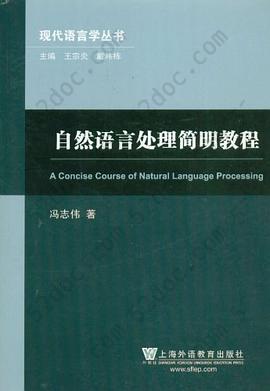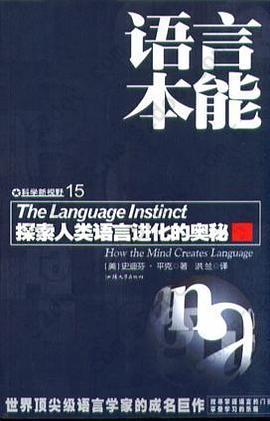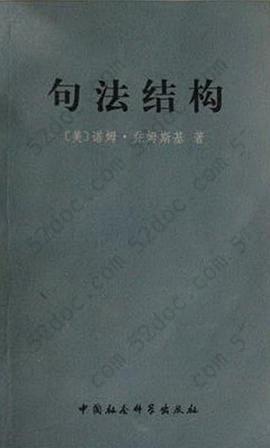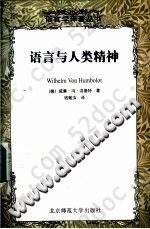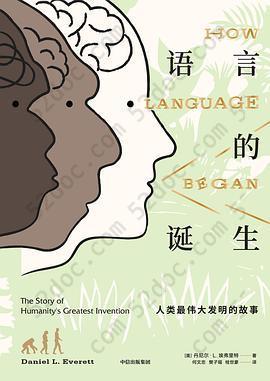注重体验与质量的电子书资源下载网站
分类于: 设计 互联网
简介
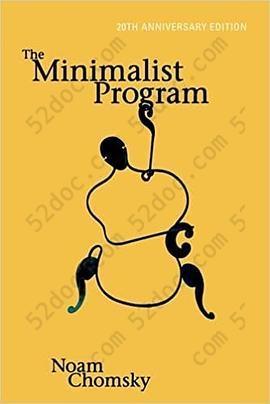
The Minimalist Program 豆 0.0分
资源最后更新于 2020-08-21 15:04:30
作者:Noam Chomsky
出版社:The MIT Press
出版日期:2015-01
ISBN:9780262327282
文件格式: pdf
标签: 语言学
简介· · · · · ·
In his foundational book,The Minimalist Program, published in 1995, Noam Chomsky offered a significant contribution to the generative tradition in linguistics. This twentieth-anniversary edition reissues this classic work with a new preface by the author. In four essays, Chomsky attempts to situate linguistic theory in the broader cognitive sciences, with the essays formulating...
目录
Front Matter (pp. i-iv)
Table of Contents
Table of Contents (pp. v-vi)
Preface to the 20th Anniversary Edition
Preface to the 20th Anniversary Edition (pp. vii-xiv)
Introduction
Introduction (pp. 1-10)
The chapters that follow are based in large part on regular lecture-seminars at MIT from 1986 through 1994. These have been continuing now for over 30 years, with broad participation by students, faculty, and others, from various institutions and disciplines. In these introductory remarks I will outline some of the background for the material that follows.
This work is motivated by two related questions: (1) what are the general conditions that the human language faculty should be expected to satisfy? and (2) to what extent is the language faculty determined by these conditions, without special structure that lies beyond them?...
1 The Theory of Principles and Parameters
1 The Theory of Principles and Parameters (pp. 11-116)
Howard Lasnik
Principles-and-parameters (P&P) theory is not a precisely articulated theoretical system, but rather a particular approach to classical problems of the study of language, guided by certain leading ideas that had been taking shape since the origins of modern generative grammar some 40 years ago. These ideas crystallized into a distinctive approach to the topic by about 1980. In the years since, many specific variants have been developed and explored. The empirical base of these inquiries has also greatly expanded as they have extended to languages of widely varying types and have engaged a much broader range of evidence concerning language...
2 Some Notes on Economy of Derivation and Representation
2 Some Notes on Economy of Derivation and Representation (pp. 117-152)
The past few years have seen the development of an approach to the study of language that constitutes a fairly radical departure from the historical tradition, more so than contemporary generative grammar at its origins. I am referring to the principles-and-parameters (P&P) approach,¹ which questions the assumption that a particular language is, in essence, a specific rule system. If this approach is correct, then within syntax (excluding phonology)² there are no rules for particular languages and no construction-specific principles. A language³ is not, then, a system of rules, but a set of specifications for parameters in an invariant system of...
3 A Minimalist Program for Linguistic Theory
3 A Minimalist Program for Linguistic Theory (pp. 153-200)
Language and its use have been studied from varied points of view. One approach, assumed here, takes language to be part of the natural world. The human brain provides an array of capacities that enter into the use and understanding of language (thelanguage faculty); these seem to be in good part specialized for that function and a common human endowment over a very wide range of circumstances and conditions. One component of the language faculty is a generative procedure (anI-language, henceforthlanguage) that generatesstructural descriptions(SDs), each a complex of properties, including those commonly called “semantic” and...
4 Categories and Transformations
4 Categories and Transformations (pp. 201-364)
The chapters that precede have adopted, modified, and extended work in the principles-and-parameters (P&P) model. In this final chapter I will take the framework for Universal Grammar (UG) developed and presented there as a starting point, extending it to questions that had been kept at a distance, subjecting it to a critical analysis, and revising it step by step in an effort to approach as closely as possible the goals of the Minimalist Program outlined in the introduction. The end result is a substantially different conception of the mechanisms of language.
Before proceeding, let us review the guiding ideas of...
References
References (pp. 365-380)
Index
Index (pp. 381-394)
Table of Contents
Table of Contents (pp. v-vi)
Preface to the 20th Anniversary Edition
Preface to the 20th Anniversary Edition (pp. vii-xiv)
Introduction
Introduction (pp. 1-10)
The chapters that follow are based in large part on regular lecture-seminars at MIT from 1986 through 1994. These have been continuing now for over 30 years, with broad participation by students, faculty, and others, from various institutions and disciplines. In these introductory remarks I will outline some of the background for the material that follows.
This work is motivated by two related questions: (1) what are the general conditions that the human language faculty should be expected to satisfy? and (2) to what extent is the language faculty determined by these conditions, without special structure that lies beyond them?...
1 The Theory of Principles and Parameters
1 The Theory of Principles and Parameters (pp. 11-116)
Howard Lasnik
Principles-and-parameters (P&P) theory is not a precisely articulated theoretical system, but rather a particular approach to classical problems of the study of language, guided by certain leading ideas that had been taking shape since the origins of modern generative grammar some 40 years ago. These ideas crystallized into a distinctive approach to the topic by about 1980. In the years since, many specific variants have been developed and explored. The empirical base of these inquiries has also greatly expanded as they have extended to languages of widely varying types and have engaged a much broader range of evidence concerning language...
2 Some Notes on Economy of Derivation and Representation
2 Some Notes on Economy of Derivation and Representation (pp. 117-152)
The past few years have seen the development of an approach to the study of language that constitutes a fairly radical departure from the historical tradition, more so than contemporary generative grammar at its origins. I am referring to the principles-and-parameters (P&P) approach,¹ which questions the assumption that a particular language is, in essence, a specific rule system. If this approach is correct, then within syntax (excluding phonology)² there are no rules for particular languages and no construction-specific principles. A language³ is not, then, a system of rules, but a set of specifications for parameters in an invariant system of...
3 A Minimalist Program for Linguistic Theory
3 A Minimalist Program for Linguistic Theory (pp. 153-200)
Language and its use have been studied from varied points of view. One approach, assumed here, takes language to be part of the natural world. The human brain provides an array of capacities that enter into the use and understanding of language (thelanguage faculty); these seem to be in good part specialized for that function and a common human endowment over a very wide range of circumstances and conditions. One component of the language faculty is a generative procedure (anI-language, henceforthlanguage) that generatesstructural descriptions(SDs), each a complex of properties, including those commonly called “semantic” and...
4 Categories and Transformations
4 Categories and Transformations (pp. 201-364)
The chapters that precede have adopted, modified, and extended work in the principles-and-parameters (P&P) model. In this final chapter I will take the framework for Universal Grammar (UG) developed and presented there as a starting point, extending it to questions that had been kept at a distance, subjecting it to a critical analysis, and revising it step by step in an effort to approach as closely as possible the goals of the Minimalist Program outlined in the introduction. The end result is a substantially different conception of the mechanisms of language.
Before proceeding, let us review the guiding ideas of...
References
References (pp. 365-380)
Index
Index (pp. 381-394)




